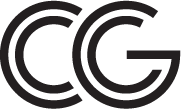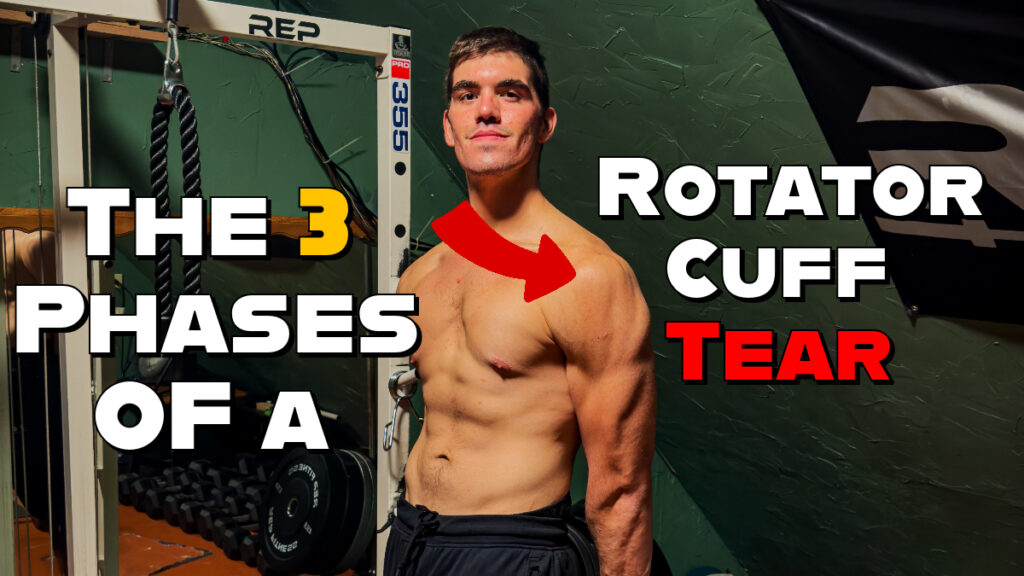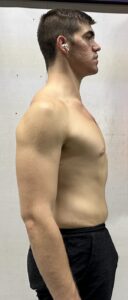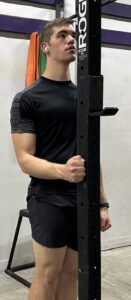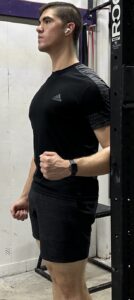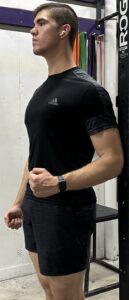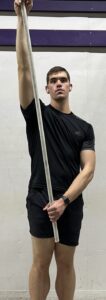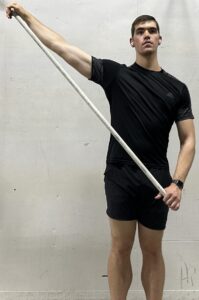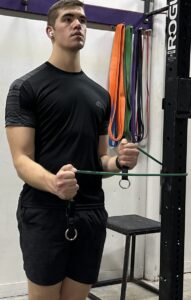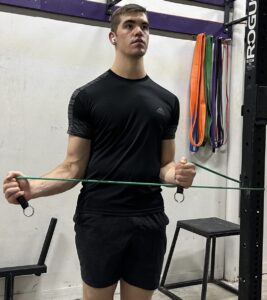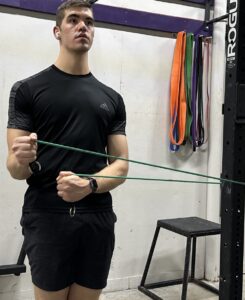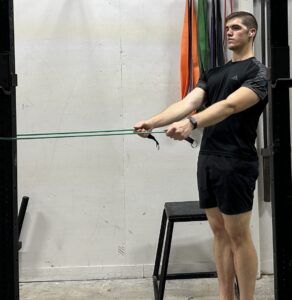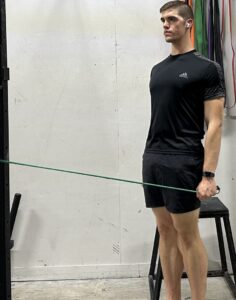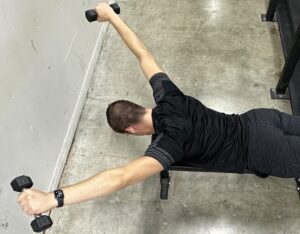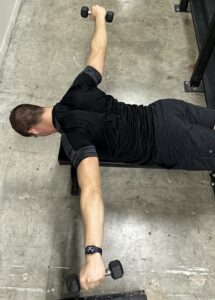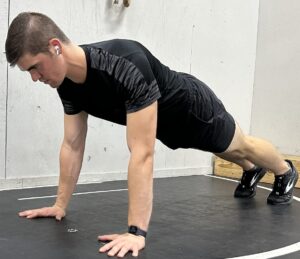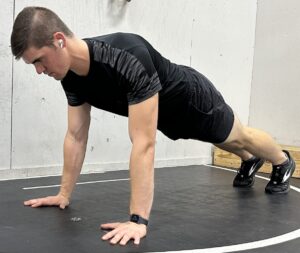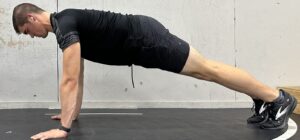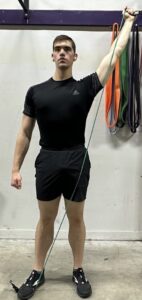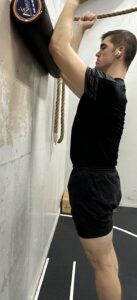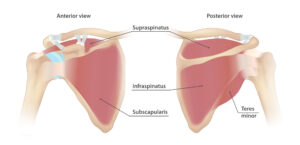What is a Rotator Cuff Tear? 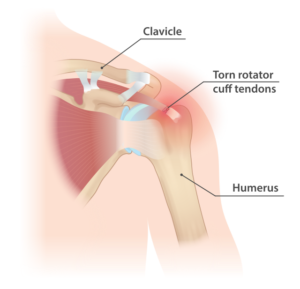
The rotator cuff (RTC) is a group of four muscles that stabilize your shoulder. If you experience weakness or pain while sleeping or moving your arm, you may have a torn RTC muscle. Tears can occur with trauma, overuse, or simply age-related degeneration. Tears are so common that most people over 40 have positive imaging. However, many of these people never experience symptoms and do not require surgery unless their symptoms are severe.
How Can We Treat Rotator Cuff Tears? 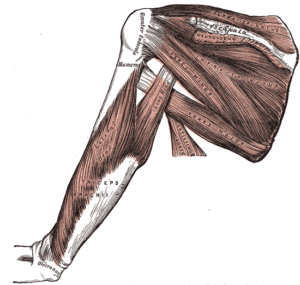
The goal of the treatment is to protect the healing process, decrease pain, increase strength, and restore previous function. To do this, rehab will focus on strengthening the muscles that act to move the humerus and shoulder blade. These include the 4 RTC muscles: supraspinatus, infraspinatus, subscapularis, and teres minor. Additionally, strengthening will target the serratus anterior, rhomboids, deltoids, trapezius, and pectoralis minor. The goal is to restore posture and muscle function to allow painless motion. However, if these movements increase your pain, stop immediately and see your healthcare provider.
Posture
Posture can reduce pain and improve function by improving the length of the muscles and creating space for painless motion. For example, push your head and shoulders forward and then try to lift your arm over your head. Next, sit up straight with your shoulders back and lift your arm overhead. You should have noticed more motion and less pinching in the front of your shoulder. This is because bringing your shoulder blades has been shown to increase the subacromial spaces leading to less impingement. Therefore, an upright posture and scapular retraction should be held with most exercises. If sleeping is bothersome, you can add a pillow under your arm to improve pain.
Scapular Retractions 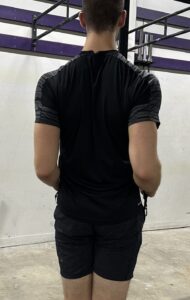
- Pull back your shoulder blades for a 2-second hold.
- Repeat for 20 repetitions daily or as needed for posture.
- Do these throughout the day when you notice yourself slouching forward.
Protection phase
When your shoulder is painful and irritated, it is essential to rest and allow the tissue to heal. During this early phase of healing, focus on the prevention of provoking activities while slowly adding in exercise. Additional interventions such as ice, compression, and soft tissue mobilization can be performed to reduce pain and inflammation. Progression to the next phase is based on the painless execution of exercises.
Wall-Press 4-ways
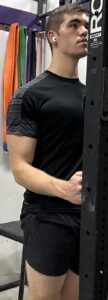
- Press into the wall until you feel a strong but comfortable isometric contraction. Keep your elbow by your side and pull back your shoulder blades.
- If this creates pain, reduce your pressure until no pain is felt.
- Hold the tension for 5 seconds and relax for 5 seconds.
- Repeat for 10 reps 1-2 times daily
Dowel Flexion and Abduction
- Use your strong shoulder and a dowel rod to move your arm out front and to the side.
- If you feel pain or pinching, simply decrease the range you push into. This exercise should be painless.
- The purpose of this exercise is to aid healing and maintain motion.
- This exercise should be performed directly out front, flexion, and out to the side, abduction.
- Perform for 20 reps 1-2 times daily.
How Bigs? (External Rotations)
- Keeping your elbows pinned to your torso and thumbs up, bring the back of your hand out to the side.
- Imagine you are explaining how big a fish you caught.
- If this exercise causes pain, you can use a dowel rod to support the painful side with your other shoulder.
- Perform 20 reps 1-2 times daily.
Strength and Stability Phase
This phase uses progressive load with proper form to improve tissue resilience. This phase also sees shoulder blade stabilization to improve coordination. It is advised to avoid heavy lifting or impact activities to allow the shoulder to heal.
Cable External Rotation
- Squeeze your shoulder blades together, and grab the band with your thumbs up.
- Hold your elbow to your side and bring your hand out to the side.
- Perform 1-2 sets of 15 reps 2-3 times a week.
Cable Internal Rotation
- With your shoulders back and thumb up, hold your elbow to your side and bring your palm in to press your belly.
- Perform 1-2 sets of 15 reps 2-3 times a week.
Serratus punches
- Lay down on your back and hold a weight in your hands.
- Try to punch the ceiling by lengthening your arm while using your serratus muscle.
- Keep your elbow straight.
- Perform for 1-2 sets of 20 reps 2-3 times a week.
Cable Rows
- Pull your shoulder blades back and drive your elbows behind you.
- Keep your arms close to your torso.
- Hold for 2 seconds before returning to the starting position.
- Perform 1-2 sets of 20 reps, 2-3 times a week.
Cable Extensions
- Facing the cables, start with rounded shoulders.
- Pull your shoulder blades back and bring your fist down to touch your pockets.
- Keep your elbows straight.
- Hold for 2 seconds before returning to the starting position.
- Perform 1-2 sets of 20 reps, 2-3 times a week.
Ws, Ys, Ts
- Keeping your palm or thumb up, pull back your shoulder blades for a 2-second hold.
- Keep your core and glutes tight.
- Keep your chin tucked in.
- Perform 15 reps in each position 2-3 times a week.
Return to Function Phase
This phase aims to restore your prior level of function. If you were a football player, your rehab would look very different from a retired teacher. This phase gradually introduces higher levels of strength, stability, and motion.
Pushup-Plus
- Start with feet hip-width apart, and activate your core and glutes.
- Push the ground away from your body while keeping your elbow straight.
- Retract your shoulder blades and reset
- Perform for 20 reps and repeat 2-3 times a week.
90-90 ER
- Place the band or cable about neck or face height.
- Keeping your core tight, pull your elbows back at shoulder level.
- Next, bring the back of your hand over your shoulders and hold for 2 seconds.
- Bring your palm back down and let your shoulder blades roll out.
- Perform for 15 reps for 2 sets 2-3 times a week.
Shoulder Taps
- Keep your core and glutes tight. While keeping your hips level, alternate hands to tap your opposite shoulder.
- Repeat for 20 taps on each shoulder.
- Repeat 2-3 times a week.
Planks 3-Ways
- Hold a forward, left, and side plank for 15-90 seconds each.
- Challenge yourself by adding 5-10 seconds each time you perform the exercise.
- In the side plank, stay tight and keep your hips and shoulders stacked over each other.
- Use your shoulder blades, core, and glutes for stability.
- Perform 2-3 times a week.
D2 Flexion
- Start with your hand over the opposite leg with the palm down.
- Retract your shoulder blades and keep your elbow straight.
- Next, pull back so your hand is overhead with the palm forward.
- Repeat for 15 reps for 2 sets.
- Perform 2-3 times a week.
Serratus Rolls
- Start with your hands at chest height and roll above your head using your serratus.
- Repeat twice for 60 seconds for each set.
- Perform 2-3 times a week.
Banded Flexion
- Start with a band around your wrists while holding dumbbells.
- Keeping your palms up, press out against the band and raise your hands to shoulder level.
- Repeat for 20 reps 2-3 days a week.
Anatomy
Supraspinatus
- Function: The supraspinatus stabilizes, abducts, and externally rotates the shoulder.
- Attachments: The supraspinatus is one of four RTC muscles. It originates in the suprascapular fossa on top of your shoulder blade. The muscle travels under your clavicle and acromion to attach to the greater tubercle of the humerus. The supraspinatus tendon is responsible for subacromial impingement. This pinching can be caused by genetics, posture, or poor muscular coordination. The scapular retraction has been shown to increase subacromial space and supraspinatus strength.
- Exercises: Full can raises, military press, and banded external rotation.
Infraspinatus
- Function: The Infraspinatus holds the head of the humerus into the shoulder capsule as a stabilizer. Additionally, it performs external rotation and extension of the shoulder.
- Attachments: Arises from the infraspinatus fossa of your scapula and inserts on the greater tuberosity of the humerus.
- Exercises: Face pulls, 90-90 external rotation, cable extensions, and lat pulldown.
Teres minor
- Function: As a rotator cuff muscle, it maintains stability of the shoulder and prevents impingement. Assists the infraspinatus in externally rotating the arm. Additionally, it adducts and extends the shoulder.
- Attachments: The teres minor arise from the outside of your shoulder blade and attach to the greater tubercle of your humerus.
- Exercises: Banded external rotation, banded extensions, and lat pulldowns.
Subscapularis
- Function: Internally rotates, adducts, extends, and stabilizes the anterior shoulder.
- Attachments: The muscle arises on the inside of the shoulder blade on the subscapular fossa. The muscle then attaches to the humerus on the lesser tubercle and the front of your shoulder capsule.
- Exercises: Belly press, 90-90 internal rotation, and stabilization exercises.
Takeaways
- Give your shoulder time to heal and focus on proper form for each exercise.
- You can train your legs and trunk muscles while your shoulder heals.
- Do not delay in seeking treatment from a healthcare professional.
MY KEY LINKS:
- 💡 YouTube – https://youtu.be/pk_RRY3Sicghttps://www.youtube.com/@cartergansky
- 📸 Instagram – https://www.instagram.com/carter.r.gansky/
- 🐦 Twitter – https://twitter.com/CarterGansky
- 🌲 Linktree – https://linktr.ee/cartergansky
- 🔊 Discord – https://discord.gg/sQxvHH78Ga
WHO AM I:
I’m Carter Gansky, a fitness and health advocate and a Doctor of Physical Therapy in training. I explore the strategies and tools that help us live motivating, healthier, and more fulfilling lives.
References:
https://www.injurymap.com/free-human-anatomy-illustrations
